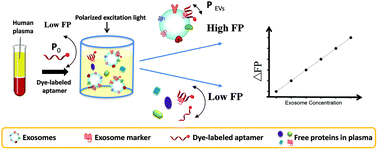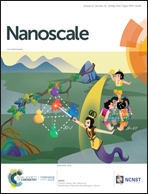Aptamer-based fluorescence polarization assay for separation-free exosome quantification†
Abstract
Tumor-derived exosomes have emerged as promising cancer biomarkers and attracted increasing interest in non-invasive cancer diagnosis and treatment monitoring. However, the identification and quantification of exosomes in clinical samples such as blood remains challenging due to the difficulty in trade-off between recognition specificity and isolation efficiency. Here we have developed an aptamer-based fluorescence polarization assay for exosome quantification, which is a separation-free, amplification-free and sensitive approach enabling direct quantification of exosomes in human plasma. While the key specificity of this assay is based on the aptamer's inherent affinity to membrane proteins on exosomes, exosomes’ inherent huge mass/volume acts as mass-based fluorescence polarization amplifier. Our assay allows quantitative analysis of exosomes in the range of 5 × 102 to 5 × 105 particles per μL with a detect limitation of 500 particles per μL for the cell line deprived exosomes. The total assay time is about 30 min with just one mix-and-read step to achieve high sensitivity. We have also demonstrated quantification of exosomes from lung cancer patients and healthy donors in clinical samples. This work describes a new and simple liquid biopsy assay to directly detect exosomes in the biological matrix, which facilitates cancer diagnosis and therapy monitoring.



 Please wait while we load your content...
Please wait while we load your content...